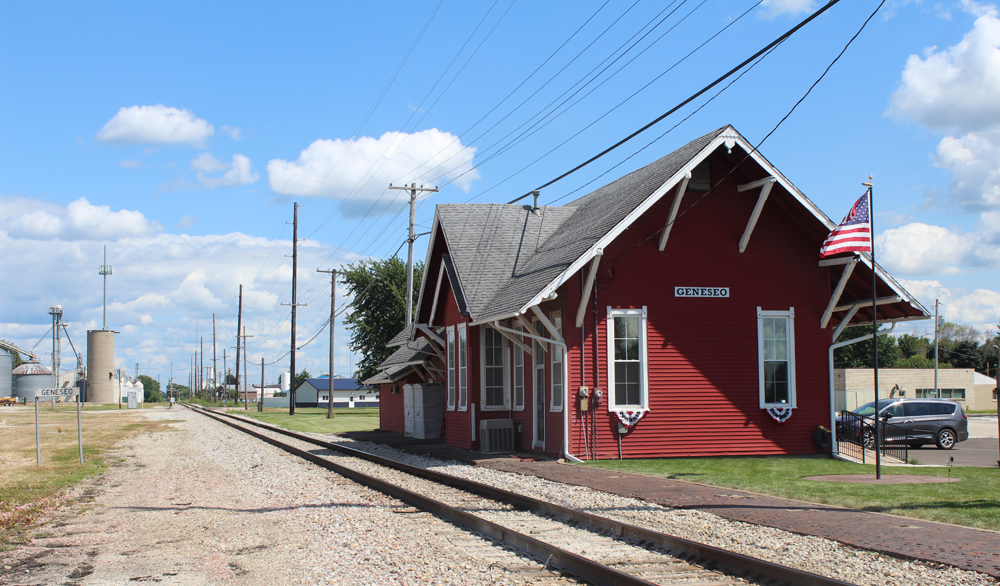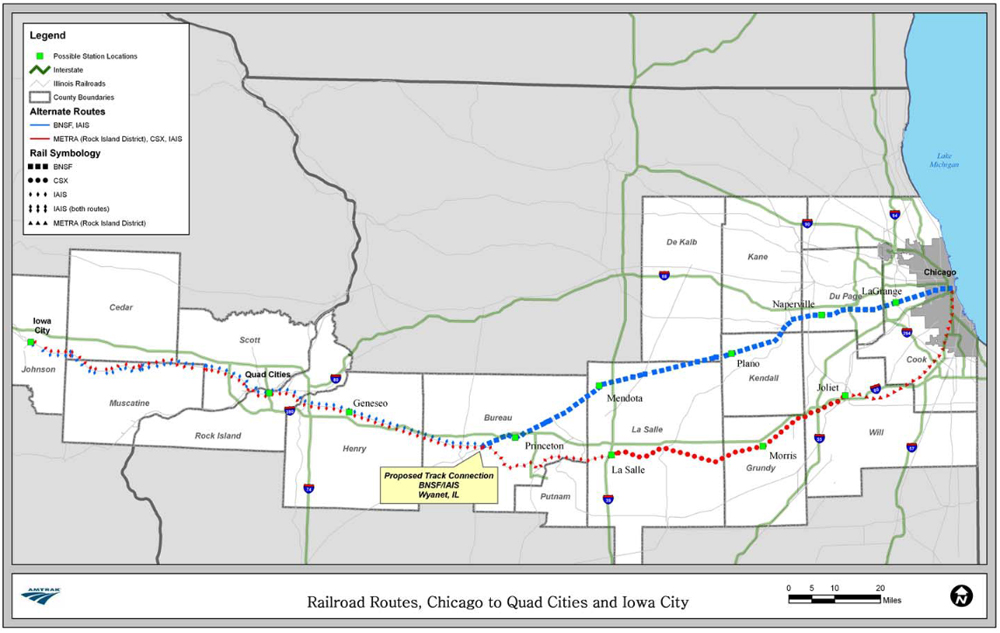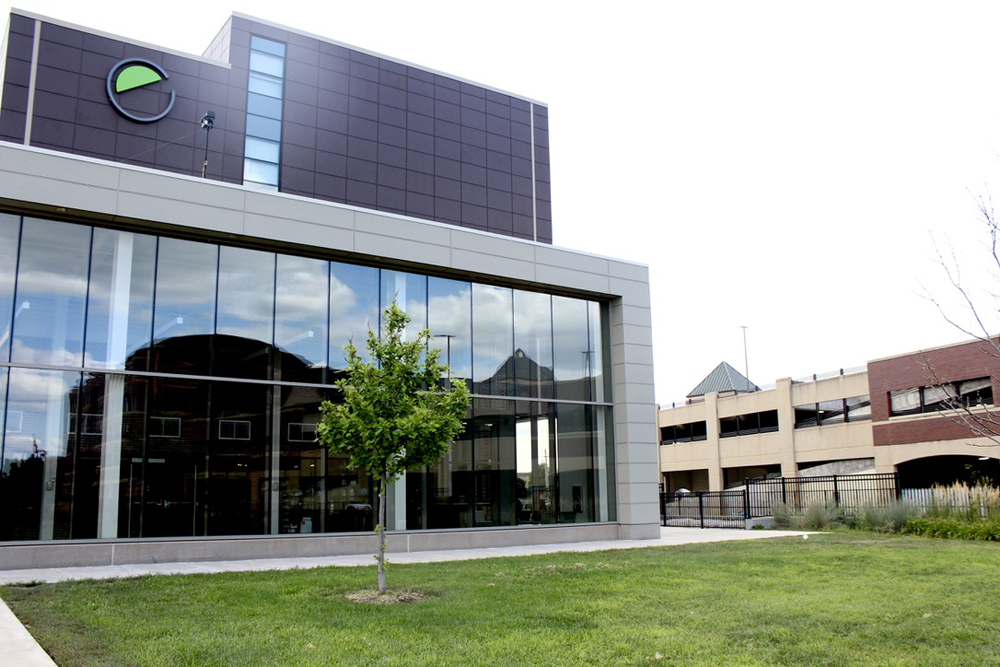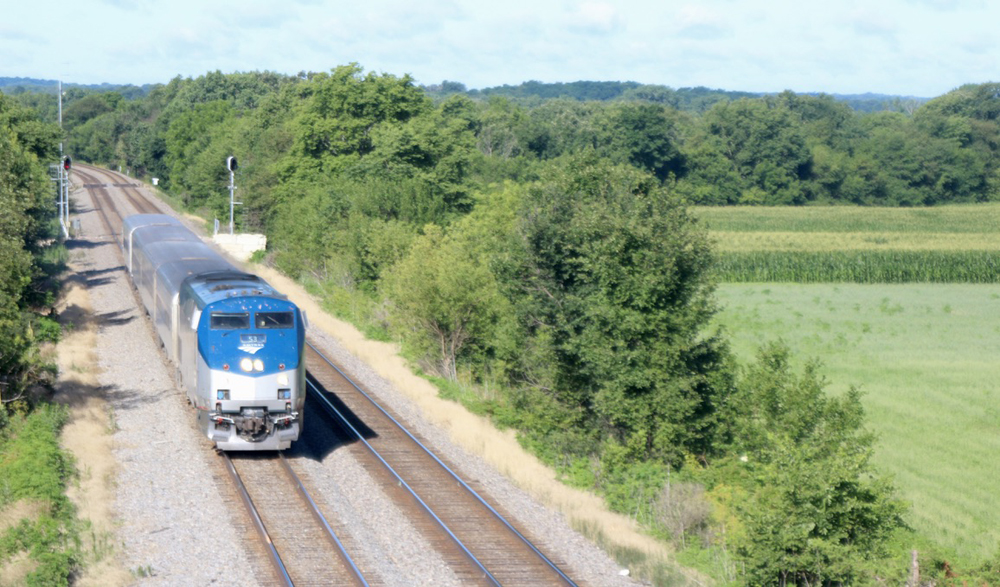
MOLINE, Ill. — Among the 69 projects receiving Federal Railroad Administration Corridor Identification and Development Program grants last December was a familiar route: Chicago-Quad Cities.
Familiar because that route, in addition to being among the recipients of the $500,000 Corridor ID grant [see “Full list of passenger routes …,” Trains News Wire, Dec. 8, 2023], was touted in a January 2008 press release from the United Transportation Union’s Illinois legislative board director. The release highlighted the $23 million price to reestablish service to Moline and Rock Island, Ill., across the Mississippi River from Davenport and Bettendorf, Iowa.
Amtrak completed a route study in December, 2007. “The one-time investment in capital improvements and $6 million in operating support,” according to the release, would provide two daily round trips. The route would utilize 111 miles of BNSF’s already Amtrak-active former Chicago, Burlington & Quincy main line between Chicago and Wyanet, Ill., where a new connection would access 48 miles of regional Iowa Interstate’s ex-Rock Island rails into downtown Moline.
Most of the investment would restore signaling and upgrades to Iowa Interstate track that would allow 79-mph operation, and build a $6 million connection and interlocking west of Wyanet where the two routes are grade separated.
With the Chicago-Quad Cities figures in hand, the Iowa Department of Transportation sponsored an April 2008 study projecting a 58-mile extension to Iowa City. The report explored revenue and ridership impacts that varied depending on the amount of signal and track investment undertaken before positive train control became a requirement.

What happened? That UTU state legislative director, Joseph Szabo, became FRA Administrator in the Obama Administration under DOT Secretary Ray LaHood, a Republican from Peoria who served in the Illinois legislature and U.S. House of Representatives. With that political firepower, the Chicago-Iowa City route was awarded $177 million in 2011 from the American Recovery and Reinvestment Act.
Meanwhile, Illinois Gov. Pat Quinn pledged $78 million from the his “Illinois Jobs Now” program and Iowa Gov. Chet Culver’s administration planned to contribute $20.6 million. But both were replaced by Republican governors who halted their investments before talks with Iowa Interstate progressed, though capacity improvements at BNSF’s Eola Yard east of Aurora moved forward and were eventually completed.
Nevertheless, the city of Moline moved forward on building an intermodal facility to accommodate trains; it and the adjoining Element Hotel opened in 2018. Iowa never showed any continuing interest.

With Democrat J.B. Pritzker recapturing the Illinois governorship in 2019, an additional $225 million in state funding was allocated to completion of the project, but the $177 million federal grant, set to expire in 2020, received an extension to Dec. 31, 2024.
With that date looming, there is still no agreement between Iowa Interstate and IDOT on the amount and nature of improvements required to launch service, so it is unclear what the additional $500,000 of planning money can accomplish other than making it eligible for future investment.
Trains News Wire has periodically made inquiries of both parties with a list of specific questions regarding costs, investment, and compensation Iowa Interstate is requesting.
In a Feb. 27, 2024, email, Iowa Interstate President and CEO Joe Parsons says, “We do remain in contact with IDOT related to the proposed Quad Cities service. However, our agreement with IDOT prohibits us from discussing negotiations publicly.”
He had been sent responses from an IDOT email that stated:

— The scope and cost of Iowa Interstate improvements, including the Wyanet connection, were still being negotiated. “Once an agreement has been reached, we will be able to complete preliminary engineering on the connection.” In January 2014, an IDOT official who now works for Amtrak told Quad Cities Online that preliminary engineering “was almost complete.”
— The state agency told the Quad City Times in 2023 that improvements Iowa Interstate was demanding were “cost prohibitive,” but IDOT would only tell News Wire, “Negotiations between IDOT, IAIS, and the FRA are active and ongoing, and we are not able to comment further on the details. There is weekly contact among the parties.”
— No timeline for completion has been established pending an agreement with Iowa Interstate, but “by way of comparison, the Chicago-Rockford passenger rail project has construction starting in 2025 and service is anticipated to begin by the end of 2027,” IDOT says. Preliminary agreements between the agency, Union Pacific, and operator Metra for that service are already in place.
— Regarding the $177 million federal grant’s upcoming expiration, IDOT says, “We are working with the FRA to [further] extend the date and are hopeful we will be able to reach agreement.” A portion of ARRA funding designated for Chicago-Quad Cities was used for equipment procurement, and IDOT did not volunteer how much money remains.
Transparent information about costs and negotiation nitty-gritty has been stuck behind a shield of confidentiality for more than 15 years. The agency tells News Wire, “IDOT is not eligible to take the case to the Surface Transportation Board.” But even if Amtrak makes that attempt on behalf of the traveling public, ongoing travails from the delayed New Orleans-Mobile Gulf Coast startup aren’t encouraging.
There may be many good reasons why Iowa Interstate, IDOT, and the FRA can’t come to an agreement that has taken 16 years (so far) to reach. At this point, another $500,000 from the Corridor ID program won’t necessarily make that happen.














Why don’t we ask Illinois’s senior senator good ole “Do-Nothing” Dick what is going on. He likes passenger trains especially when there is a ribbon to cut.
Yeah, Mark, we all like Trains. Problem is reality tends to get in the way. Whether there be Dem or GOP governors. Socialism works great until you run out of other people’s money to spend
Truly discouraging how long it takes to get a new Amtrak service started.
The Iowa Legislature is not at all interested in spending huge sums so Chicago Land students at the U. Of Iowa can ride a train home on weekends.
This secrecy of how public funds will be spent is an invitation for unnecessary spending. It is time to get more transparency.
Not defending the GOP Governors, but Illinois was functionally broke for many of the years they either blocked or reduced the amount of funding for the route.
The Big One has a recently passed constitutional amendment that separates transportation funding from general funding, please a massive tax increase to back it up. Something not even the Dem governors could work with.
That is the big difference between now and the times referenced in the article.
Illinois wasn’t broke at that point until Governor Ruiner (Rauner) started playing around and wouldn’t work with the Democratic controlled Legislature. Ruiner also killed many other transportation projects that cash was in hand including kicking cancer patients off the State’ Medicare program that was paid in part with Federal Dollars.
@Mark: Go back farther….It goes before Rauner, actually right after the Edgar/Daniels combo left Springfield. Madigan got the House back and from then on the State of Illinois consciously decided to borrow money on the municipal markets to start covering revenue shortfalls. Before Pritzker they were borrowing against “future” real estate tax revenue, basically taking a credit card loan using taxpayers personal property as collateral. As the public pensions grew out of control, more money was relocated from other accounts (like public education, medicare, IDOT. etc.)
Pretty soon the markets told Illinois to either raise taxes or stop borrowing. Illinois raised income and fuel taxes and did the constitutional separation of highway money from the general fund.
Well intercity transportation is one part of the puzzle for a city not the only one.
On moving to a project execution plan, these one time grants need to be structured into an equivalent annual payment that only begins once service starts. Annual payments (shadow tolls) would be earned per train-mile actually operated of intermodal passenger and freight trains.
This would correct the dis-incentives toward failure to execute projects, taking capital and then not operating, or deciding a decade later that the capital taken no longer guarantees a fluid mainline.
In other words, no matter how much money is promised, no one can put together the package. Hundreds of millions of dollars on the table —- “see your quarter billion and raise you another hundred million” —- can’t get the donkey off the floor.
Reminds me of last week’s article on KRM — the long-proposed (but never seriously considered) commuter route from Kenosha to Racine to Milwaukee. How long this proposal has been kicking around with no action was inadvertently revealed by the age of the article’s map, showing the long-relocated Sturtevant Amtrak depot in its old location. KRM has been pondered for many years (and would take many more years to bring to fruition) — yet Wisconsin’s southern tier counties haven’t dried up and gone away. In fact, they are prospering in the commuter route’s absence.
The Quad Cities have managed to exist without any intercity rail service since the Rock Island’s non-Amtrak trains dissolved. As have Iowa’s other major cities for even longer: —– Des Moines, West Des Moines, Cedar Rapids, Sioux City, Dubuque, Iowa City. Tells you something, ey?
Though this would most likely have been up and running had it not been thwarted by GOP Governors.